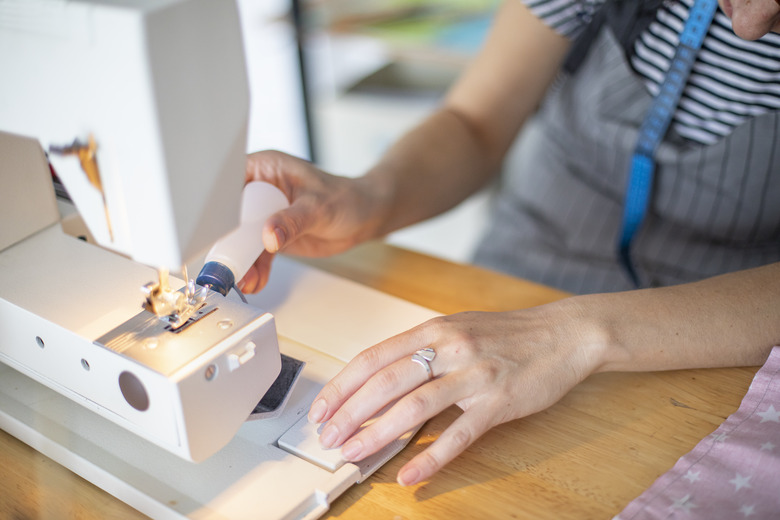The Difference Between Air Tool Oil And Sewing Machine Oil
We may receive a commission on purchases made from links.
Oils keep machinery running by lubricating gears and other moving parts. Each piece of equipment requires the appropriate oil that's formulated for that use, such as air tool oil and sewing machine oil. While these oils may be synthetic, petroleum-based, or plant-based, using the correct type of oil is essential to ensure efficient running and protection against damage to the equipment. Using the wrong oil can be an expensive mistake, causing permanent damage to the machine. Here's what to know about the difference between air tool oil and sewing machine oil.
The Different Types of Oil
The Different Types of Oil
There are hundreds of different types of oils formulated for a variety of purposes. Even when used for essentially the same purpose, the oils can differ dramatically in viscosity and weight. Oil for your car's engine is quite different from a sewing machine or air tool oil, even if they're all synthetic or petroleum-based. When choosing an oil for your air tool or sewing machine, there are three primary types:
- Synthetic: Expensive but protects against oxidation.
- Petroleum-based: Affordable and high quality but may not protect against oxidation.
- Plant-based: Natural plant product but can become thick and sticky
if mixed or used improperly; not recommended by most manufacturers.
While some sources mention lubricants like WD-40 and 3-in-One Multi-Purpose Oil, do not use these products unless the manufacturer specifically recommends their use with your device. Over time, using the wrong lubricant tends to gum up the moving parts, causing more trouble than they are worth. Saving money is about more than using inexpensive products; the costs of having your equipment cleaned and repaired can be an expensive lesson in "penny-wise and pound-foolish."
Sewing Machine Oil
Sewing Machine Oil
Sewing machines use a lightweight oil product, such as white mineral oil. Despite the name, it is clear and odorless. Triflow is a higher-grade mineral oil with additives that help protect the sewing machine against corrosion. In general, all types of mineral oil are safe for use on sewing machines.
To lubricate your sewing machine, first unplug it. Clean the sewing machine thoroughly with a brush, compressed air, or a hand-held vacuum cleaner. Some sewing machines have small access ports or holes to apply the oil. Otherwise, follow these steps:
- Remove the first panel.
- Apply the sewing machine oil according to the manufacturer's directions.
- Replace the panel.
- Repeat with each panel one at a time.
- Remove excess oil with a cotton swab; it should not be dripping.
- Use a cotton swab dipped in alcohol or use soap and water on a rag to clean any oil spills.
After oiling the machine, sew a scrap of fabric to ensure that there's no excess or spilled oil to mar your next sewing project. While slightly less effective, synthetic clock lubricants can be used to lubricate a sewing machine. They are safe for use on metal, plastic, rubber, and other parts of the mechanism.
Air Tool Oil
Air Tool Oil
Pneumatic power tools, such as nail guns, impact wrenches, and spray guns, are all driven by compressed air provided by an air compressor or compressed carbon dioxide in cylinders. The tools need regular lubrication to keep them running smoothly. Generally, air tools are lubricated daily with a synthetic or conventional 10W, rust-inhibiting oil or other manufacturer-recommended oil. To apply the oil, follow these steps:
- Remove the cap or plug if there is one.
- Put several drops of pneumatic tool oil into the tool or air inlet.
- Run the tool for approximately 10 seconds.
- Hold a piece of paper near the tool exhaust.
- Watch for a spray of oil to appear on the paper. This indicates that the tool is ready for use.
- Close the cap or plug.
While intermittently used tools only need lubrication once or twice daily, pneumatic tools in continuous use through the day need more frequent lubrication. When putting the tools away for several days or the weekend, lubricate again and then cover the inlet before storing them in a clean, dry garage or shed.
